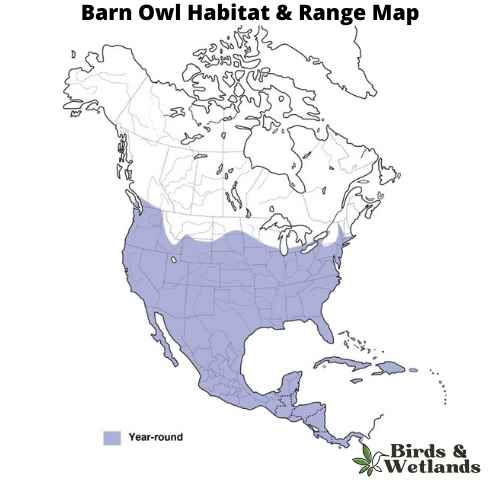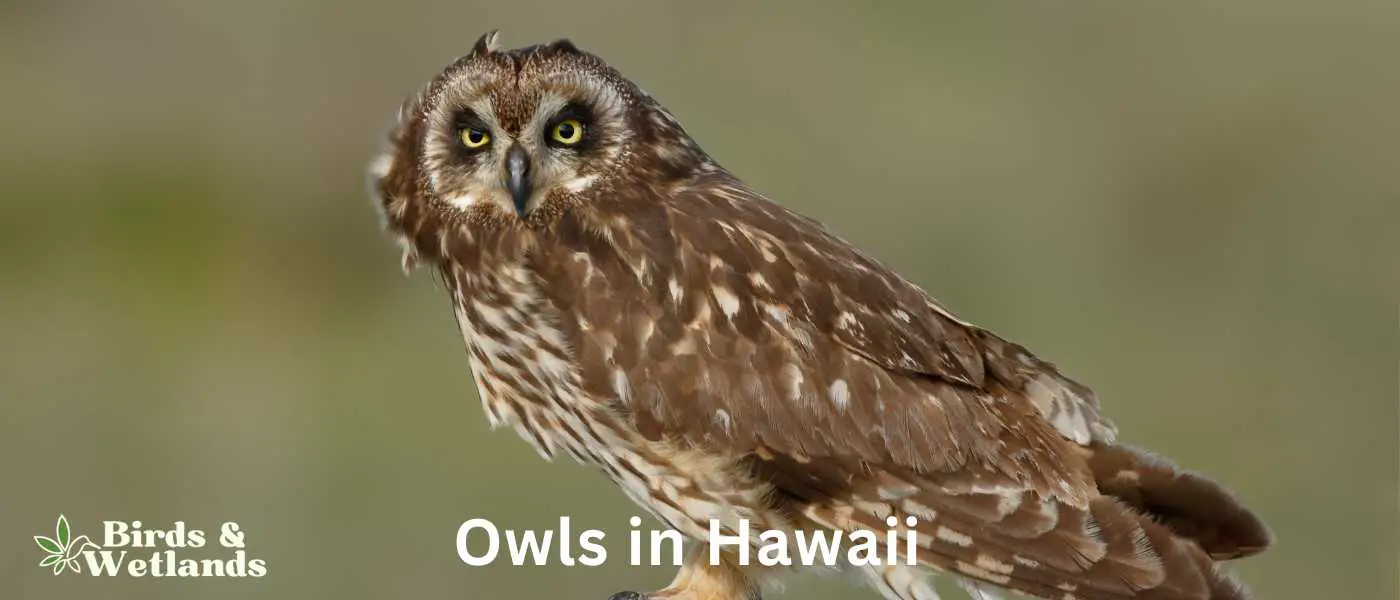Amid the tropical splendor of Hawaii, with its lush rainforests, rugged volcanic landscapes, and breezy shorelines, exists a fascinating presence of owls.
There are only two species on the hawaii island, the native Pueo, which are native birds, and the non native Barn Owl, each displays unique behaviors and adaptations honed to the specific demands of their island habitats. The native pueo holds a lof of importance for many hawaiian families where it is often considered as ancestral spirits.
Hawaii Owls
| Owl Species | Frequency in Hawaii | Presence in Hawaii | Where to Find in Hawaii |
|---|---|---|---|
| Pueo (Hawaiian Short-eared Owl) | High | Statewide | Haleakala National Park, Maui; Waimea Valley, Oahu |
| Barn Owl | Moderate | Introduced, found on all major islands | Pu’uhonua O Honaunau National Historical Park, Big Island; Kealia Pond National Wildlife Refuge, Maui |
Note: The frequency level is subjective and is classified as High (very common), Moderate (common), Low (uncommon, but not rare), Very Low (rare), or Extremely Rare based on relative sightings in Hawaii. It’s worth mentioning that the only native species of owl in Hawaii is the Pueo. The presence of other owl species in Hawaii is mainly due to introductions or very rare migrations.
Owl Species Found in Hawaii
Pueo Owl

The Pueo (Asio flammeus sandwichensis) is a subspecies of the Short-eared Owl that is endemic to the Hawaiian Islands. The name “Pueo” comes from the Hawaiian language and is used locally in Hawaii to refer to this particular bird.
Pueo owls are medium-sized, measuring about 13 to 17 inches in length with a wingspan that ranges from 33 to 41 inches. They have mottled brown bodies, pale underparts, and yellow eyes. A notable characteristic of Pueo, similar to other short-eared owls, is their relatively short ear tufts which are often not visible.
Unlike many other owl species, Pueo can often be seen hunting during the day as well as at night. Their diet mainly consists of small mammals, but they will also eat birds and insects. They are skilled hunters, known for their ability to glide and hover before diving onto their prey.
In Hawaiian culture, the Pueo is considered an ‘aumakua, or family god, and is revered as a protector spirit. Seeing a Pueo is often considered a good omen.
Pueo nest on the ground, typically laying between 3 to 11 eggs. The female incubates the eggs while the male provides food.
Barn Owl (Tyto alba)


Barn Owl Sound
Scientific Name: Tyto alba
Length: 13 to 15 in
Wingspan: 31 to 37 in
Weight: 9.2 oz
The Barn Owl is a widespread species of owl known for its distinctive heart-shaped facial disc.
Barn Owls are medium-sized owls, they are pale overall with golden-brown wings and back, contrasted by a white face, chest, and belly. Their most notable feature is their heart-shaped facial disc, which helps channel sound to their ears.
Barn Owls are typically found in open habitats, including farmland, woodland, and marshes. They are named for their habit of nesting in human structures such as barns, church towers, and in the hollows of large trees. These owls are nocturnal, hunting at night and roosting during the day.
The diet of Barn Owls primarily consists of small mammals, particularly rodents such as mice and rats. They are known for their silent flight, which allows them to sneak up on their prey without detection.
Barn Owls have a unique nesting behavior. They do not build nests, but instead, lay their eggs directly on the bare surface of a secluded ledge or cavity. A female typically lays 4-7 eggs, and both parents help incubate the eggs and care for the chicks.
Where to Spot Hawaii’s Owls
Haleakala National Park, Maui: This park is a fantastic spot to see the Pueo, especially in the subalpine shrubland and grassland areas. The Pueo can be seen during daylight hours, which is unusual for most owl species.
Waimea Valley, Oahu: This nature park and botanical garden offer excellent birdwatching opportunities. The Pueo is often seen in the late afternoons hunting over open fields.
Kilauea Point National Wildlife Refuge, Kauai: Another good spot for owl watching, this refuge located on a scenic ocean bluff is frequented by the Pueo, particularly around dusk.
Hawaii Volcanoes National Park, Big Island: The wide open grasslands in the park are ideal for spotting Pueo. Watch for them hovering or perching on fence posts in the late afternoon or early morning.
Kanaha Pond State Wildlife Sanctuary, Maui: This sanctuary offers a chance to see the Pueo hunting over wetlands, especially during the late afternoons.
Tips on How to Spot Owls in Hawaii?
Learn About the Pueo: The Pueo is the primary owl species you’ll encounter in Hawaii. They are medium-sized owls and are active during both the day and night. Familiarize yourself with their appearance and habits to increase your chances of spotting one.
Daytime and Dusk Observations: Unlike many owl species, Pueo can often be seen hunting during daylight hours, especially around dawn and dusk. Scan open fields and grasslands during these times for the best chance to see one.
Check Open Areas: Pueo can often be seen in grasslands, open fields, and lightly forested areas. They are known to hover and swoop while hunting for prey. Some popular spots include the slopes of Haleakala on Maui and the Saddle Road area on the Big Island.
Look for Signs: Keep an eye out for signs of owl activity. This might include owl pellets or even patches of worn-down grass that could indicate a Pueo nest.
Respect Wildlife Regulations: Pueo are considered sacred by the native Hawaiian people and are protected under state law. Always observe from a distance, do not attempt to approach or feed owls, and respect any closed or restricted areas.
Listen for Calls: Pueo have a variety of calls, including barks, screams, and hisses. Familiarizing yourself with these sounds can help you locate these owls, especially when visibility is low.
Join a Local Bird Watching Group: Joining a local birding group can be very helpful. Local birders will be familiar with the most recent sightings and can offer tips specific to the area.
Equipment: A good-quality pair of binoculars is important for spotting and observing owls without disturbing them.


